Mangalitsa (sometimes spelled Mangalica) is a breed of pig, originally from Hungary. It has two defining characteristics: 1) it’s very hairy and 2) it’s about the trendiest meat in North America right now. Part of that second characteristic is about supply. There aren’t many Mangalitsa breeders, and a whiff of interest from the hard core foodie and hipster chef crowd makes them hard to get a hold of. (There was an OCTA sponsored chefs festival all about the breed recently in Toronto called Pigstock, which was modeled on a bigger one of the same name held yearly in Michigan.) But a lot also has to do with demand. Like the other heritage breeds, they are purported to taste better than the commonly used industrial farming stock of pig. (See my August 2015 interview with pig historian and author Mark Essig for further insight on this here.) Some say it might be the best because under all that fur, there’s a lot of fat. And fat, we all know thanks to Jennifer McLagan, is where the flavour is.
The brothers Gundy, Ben and Sam, run Olliffe. Their boutique, locally sourced, meat shops are both Good Food Fighter sponsors of GFR and my family’s regular butchers. I live and work close to their Summerhill store. Yesterday, I had some business at the bank across the street from the shop. It was a pretty nice afternoon for Toronto in December, so I decided to delay my return to my desk once I had finished and do the shopping for dinner. It was good timing. When I came up to the display counter, Sam Gundy gestured for me to come over to the block. He had a big side of an animal laid out.
“Do you know what this is?”
I was pretty pleased with myself for being pretty sure it was pork (by process of elimination it wasn’t a chicken, and the sides of beef in hanging in the fridge to my left looked bigger and darker than what Sam was standing in front of.) But that wasn’t the point. The point was that it was his first shipment of Manglitsa pork from Sylvania Farms in Pelham on the Niagara Peninsula. Like I said, it was good timing.
I was excited, and looked more closely at the rack. In the picture at the top of this post, you can see the enormous fat cap on the side of meat, and the deep marbling of the flesh. I immediately accepted the offer of trying one for that night’s dinner. After they had cut me off a rib chop with their band saw, Rob, one of Olliffe’s properly trained butchers, spent the better part of 10 minutes trimming the fat off of it – that was just one chop. The fat cap was so thick he used a cloth to grip his long machete-like knife because there was so much fat the handle kept getting greasy. As he proceeded with his work, Sam explained to me that this pig was not 100% Mangalitsa. It was a cross between Mangalitsa and a common (and much leaner) Duroque. The pure bred Mangalitsa were too fatty to be commercially viable in Sylvania’s opinion.
When it was time to cook and taste the exotic chop, I prepared it using the traditional spice blend of my people: salt and pepper. That’s it. I let a cast iron pan sit on a burner set to high for a few minutes and seared well, maybe five minutes on both sides. There was no need for any cooking medium, like oil or butter. Then, I set the pan in a 375 degree oven for another ten or 15 minutes to cook through.
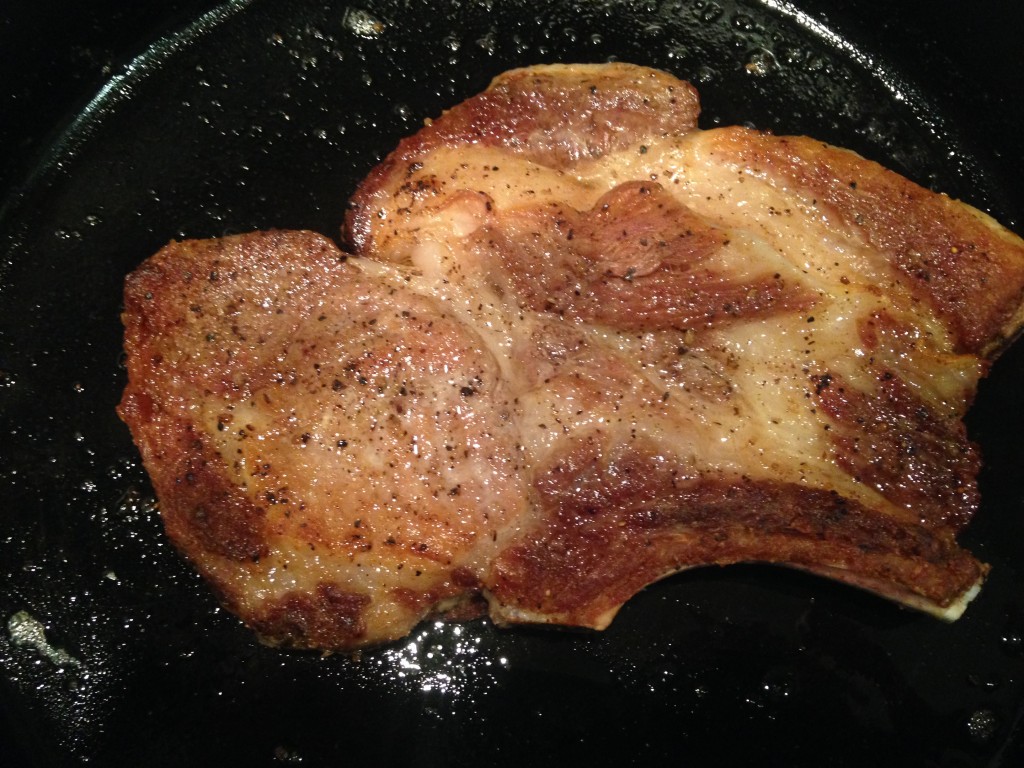 The chop rendered a lot of fat: about a cup. I gave it pat down and cut it into strips to share with my wife for dinner. It was amazing. Now, I get it. The chop was pleasantly porky with a hint of barnyard that good pork, from naturally raised heritage breeds like Tamshire or Berkeshire, tastes like. It’s not that it had a particular flavour that distinguished this chop from all other, per se. It was the amazing texture of the meat that led us to clean our plates of it quickly. Basically, the chop kind of deep fries itself. That means each bites come with two fantastically crunchy exterior bits and a middle bit of silky, tender meat. It almost like the chop is a thick Schnitzel with amazing crisp and soft contrast. My fervent hope is that Olliffe’s first shipment of Mangalitsa is not its last.
The chop rendered a lot of fat: about a cup. I gave it pat down and cut it into strips to share with my wife for dinner. It was amazing. Now, I get it. The chop was pleasantly porky with a hint of barnyard that good pork, from naturally raised heritage breeds like Tamshire or Berkeshire, tastes like. It’s not that it had a particular flavour that distinguished this chop from all other, per se. It was the amazing texture of the meat that led us to clean our plates of it quickly. Basically, the chop kind of deep fries itself. That means each bites come with two fantastically crunchy exterior bits and a middle bit of silky, tender meat. It almost like the chop is a thick Schnitzel with amazing crisp and soft contrast. My fervent hope is that Olliffe’s first shipment of Mangalitsa is not its last.
Like I said, it was good timing.
 Malcolm Jolley is a founding editor of Good Food Revolution and Executive Director of Good Food Media, the company that publishes it. Follow him on Twitter or Facebook.
Malcolm Jolley is a founding editor of Good Food Revolution and Executive Director of Good Food Media, the company that publishes it. Follow him on Twitter or Facebook.

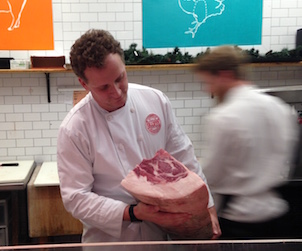
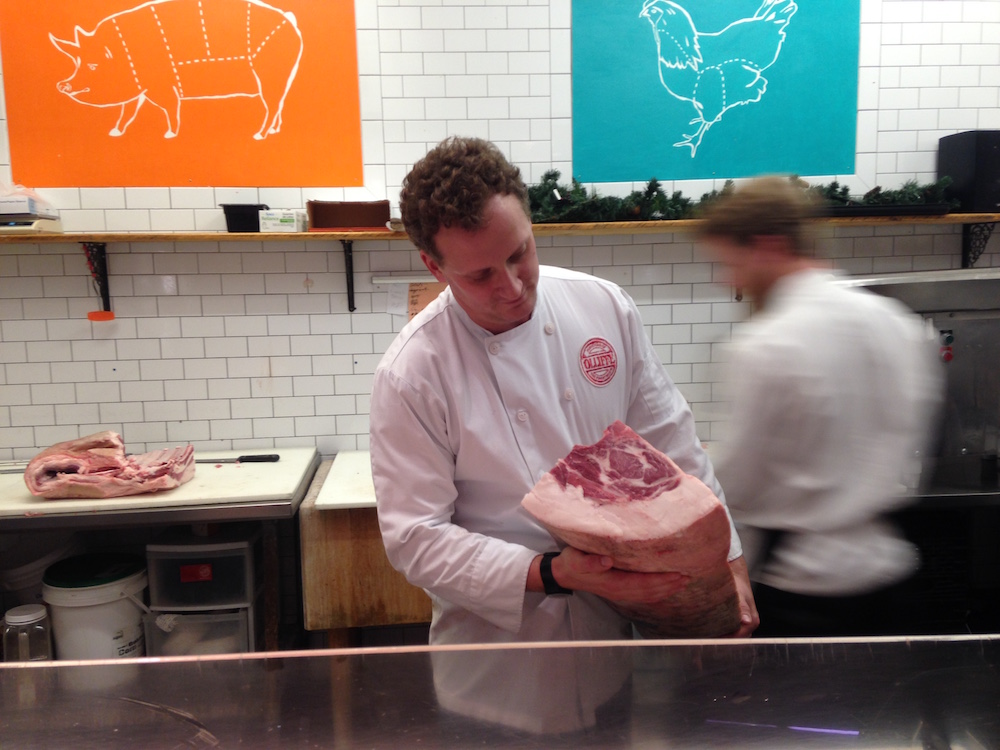


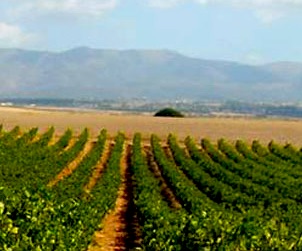
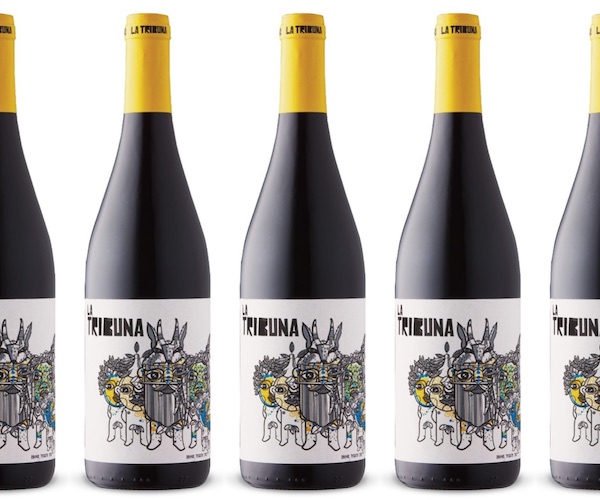
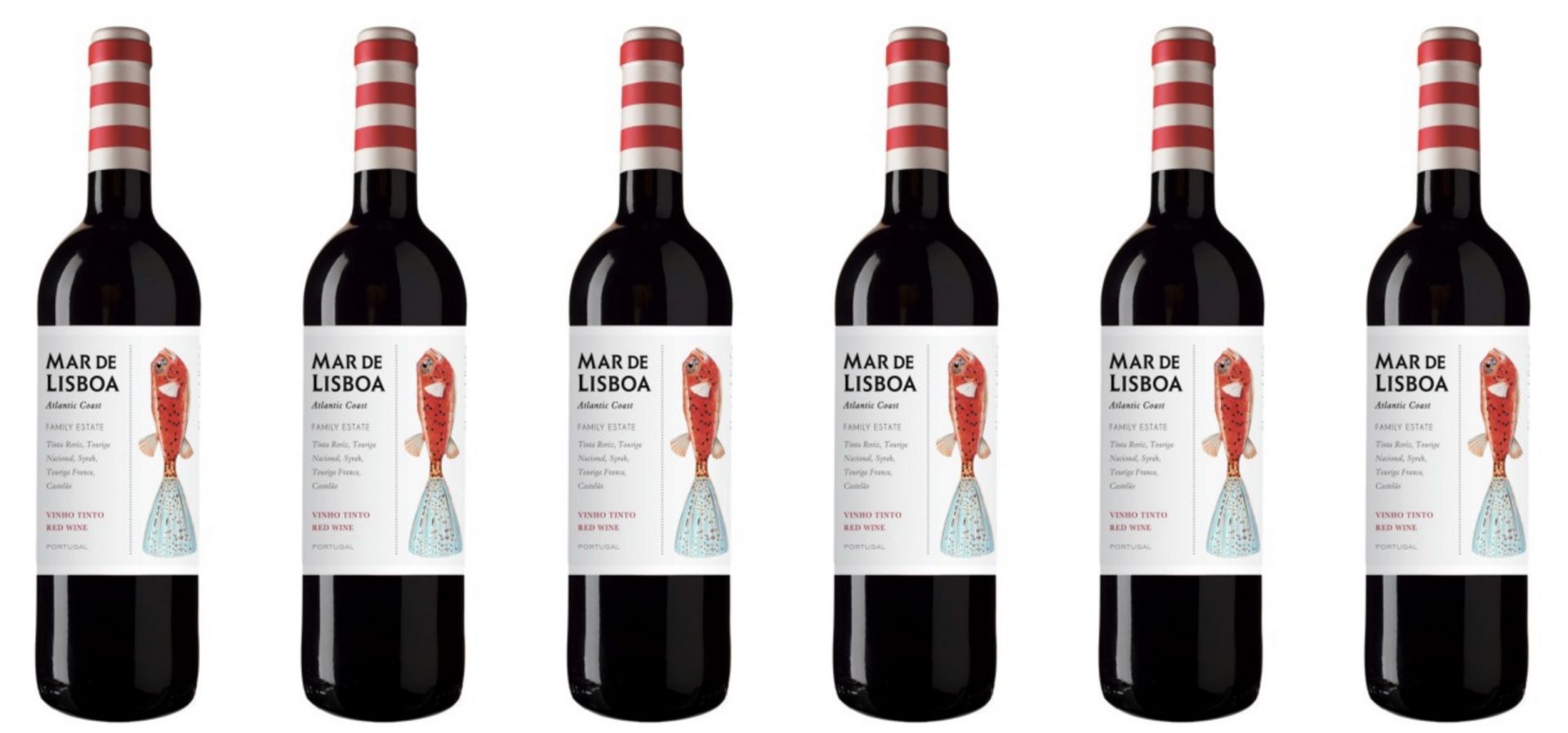
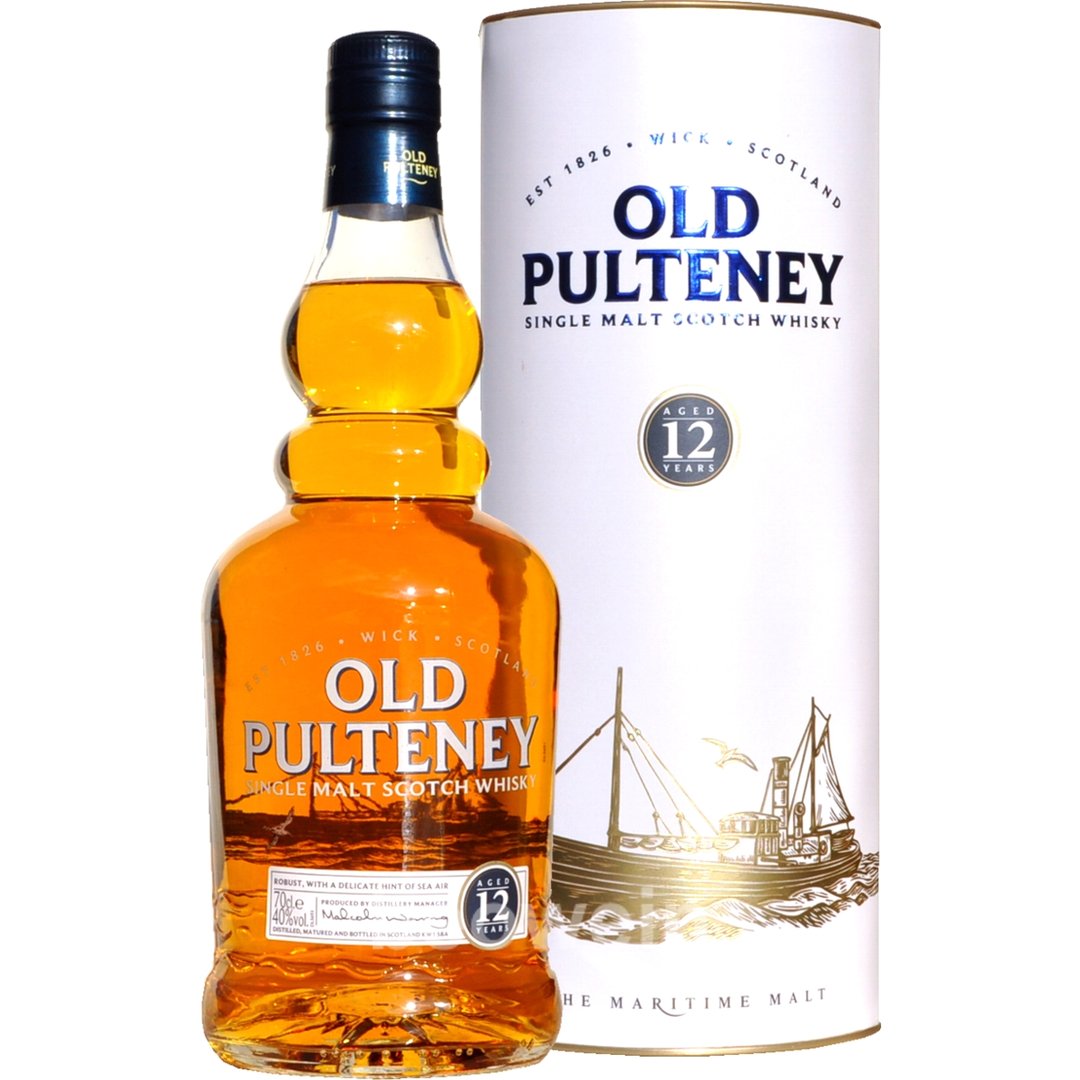

Thanks Malcolm for the great review, the Mangalitsa is an exceptional pig breed, raised properly it will produce an amazing product. If you have a chance to taste and review the Pure Mangalitsa products, let us know the difference. One of our distributors in Toronto is Sam, from Olliffe Butcher Shop.
Avec plaisir! Thank you for raising such a delicious animal.
hello i was just wondering where your located?